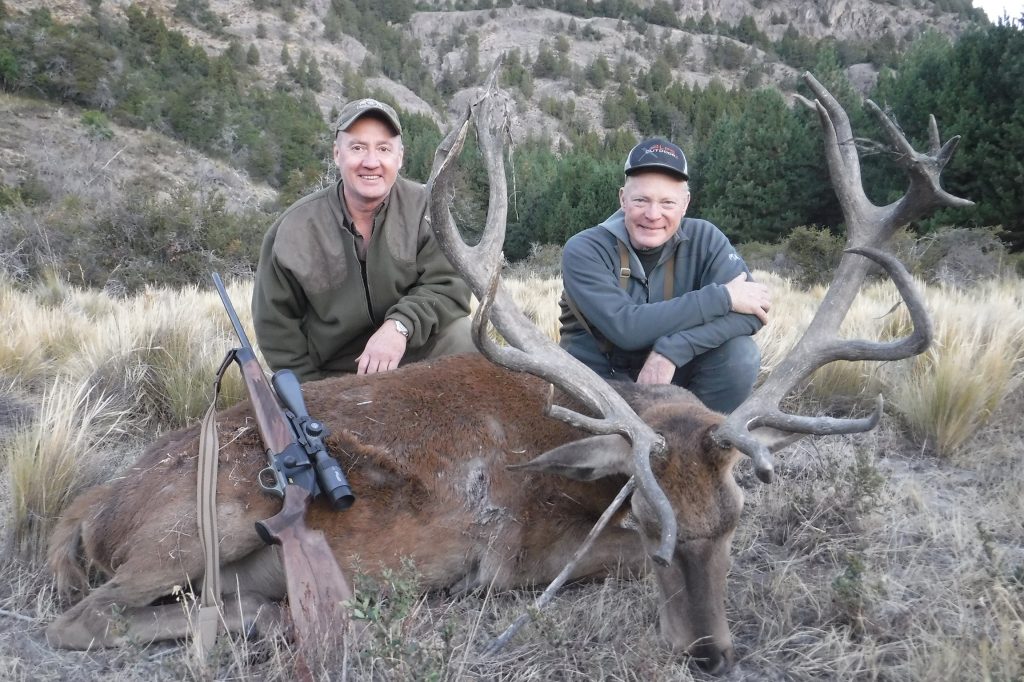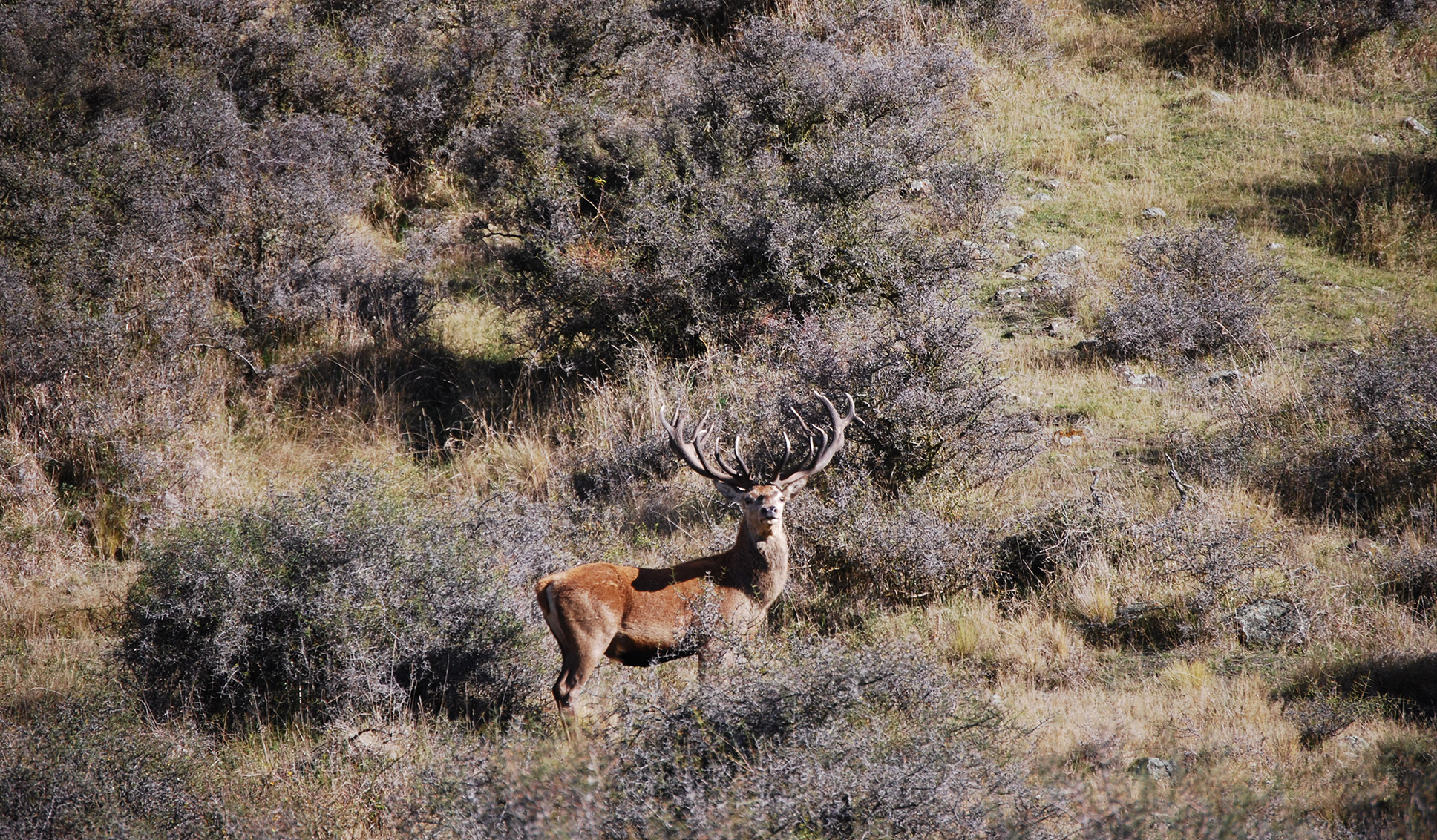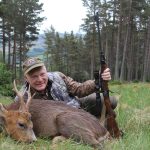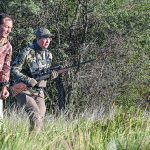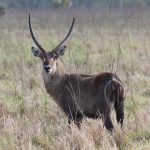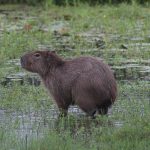Red deer are magnificent trophies and can be hunted in many parts of the world.
The European red deer is one of the world’s only game animals that can be found on every continent (except Antarctica). This big, beautiful deer is native to Europe and Asia, and various races are widespread on both continents. Less known, the Barbary red deer is native to North Africa. Algeria, Morocco, and Tunisia still have populations of this native African deer.
Red deer have been widely introduced all over the place. Best-known introductions are Argentina and New Zealand, but there are also free-range populations in Australia and Chile. Red deer are relative common on hunting ranches in Texas, and there have been other introductions in North America.
So, if you want to hunt red stag, almost the entire world is your oyster. That makes it complicated! Probably best start with some basic questions. Is it important to hunt native range? How about free range? Want a big stag, or a good hunt for a nice stag? What about timing? Personally, I hate reality, but budget must always be part of the discussion.
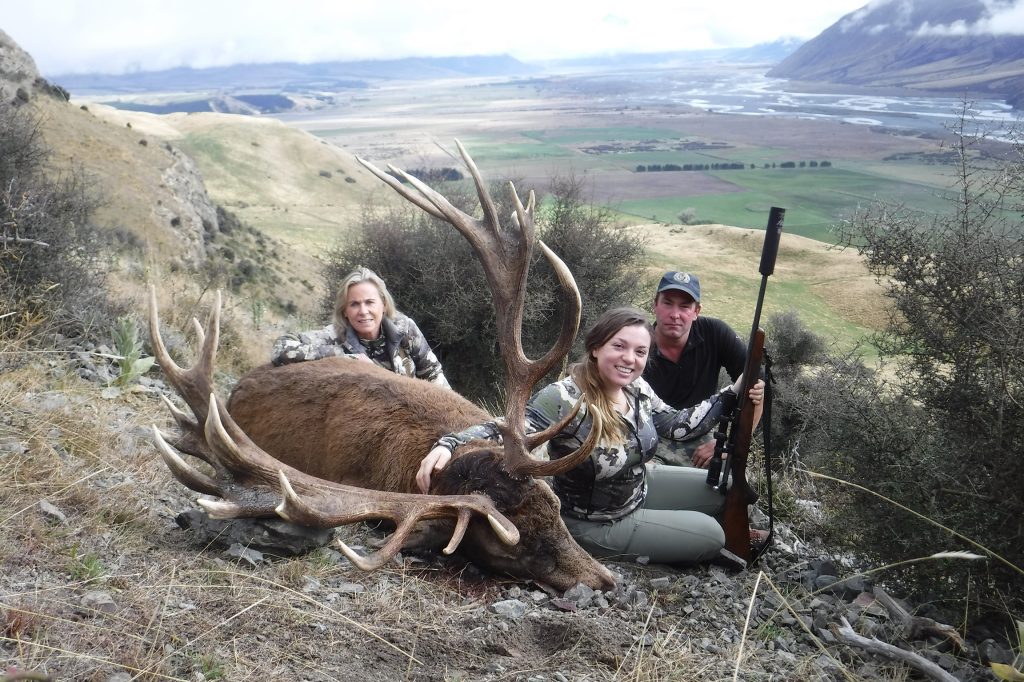
NATIVE RANGE/FREE RANGE
Native range is simple: Throughout most of Europe, and into western Asia. The majority of red stag hunting in Eurasia is free range, but this issue is more complicated. The red deer has been farmed, ranched, and bred for so long that no region is completely free of high fences. In large areas, the experience suffers little, but if you insist on “wild and free,” then you must ask the hard questions.
Outside of Europe, Argentina and New Zealand are the primary destinations. Both have free range red deer in vast areas, but both countries have active deer breeding and game ranching industries, so the hunting is a mix. You can have either, even both, but it’s important to know. These days, there are some excellent red deer in Texas and elsewhere in North America, but free-range opportunities are unlikely.
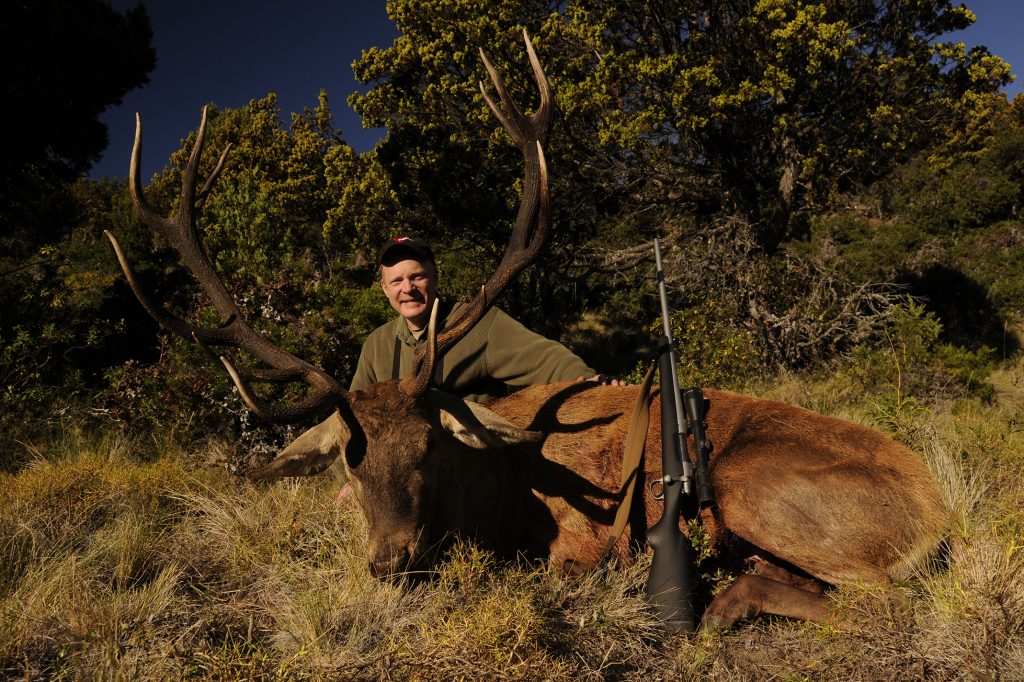
HOW BIG A STAG?
The biggest European stags are probably in Eastern Europe. Bulgaria, Romania, and Hungary are especially famous for big stags. Spain has excellent red deer hunting, but the Spanish subspecies is smaller. Scotland also has fantastic stag hunting, but Scottish stags are also smaller.
In Europe, animals—especially large specimens—are traditionally priced by size (using the European CIC system that Americans don’t understand). Big stags of medal quality are expensive. Europeans are used to this; Americans are not. For us, the best situation is to find a “package” that puts allows a stag up to a certain size for a fixed price, as in bronze or silver medal. These can be good deals, but you must accept the gamekeeper or guide’s judgment; you may see stags bigger than you’re allowed to take (or willing to pay for).
Stalking stags in the Scottish Highlands is a matchless experience and generally free-range. Breeding of bigger stags is ongoing, but native “hill stags” are not large, and the hunt is really a harvest, where stalking on foot is an all-important art form. Stalking stags in Scotland is not expensive, but the “sports” are absolutely expected to go with the program. Expect to see magnificent “breeding stags” that are off-limits.

New Zealand is famous for producing the world’s largest red stags. Yes, but understand that deer farming (for venison and antler velvet) has been an industry in New Zealand for generations. In the 19th Century, red deer were introduced in the rugged hills above the farmed valleys. Finding an ideal environment absent predators, they bred up to nuisance numbers. Original stock was of poor antler quality and didn’t magically improve. To this day, genuine free-range New Zealand stags have modest antlers.
Deer farmers brought in superior genetics and are producing magnificent stags, but New Zealand’s biggest stags are behind wire and, sad to say, the really big ones are typically in small pastures because of their value. This picture is changing. Between escapees and purposeful releases, New Zealand now has excellent unfenced stags in the hills above the deer farms, and on large fenced estates. However, in the back country, “genuine” free-range New Zealand stags still have modest antlers.
Red deer were introduced in Argentina’s Patagonia and La Pampa regions a century ago. They flourished and, unlike New Zealand, original releases came from good stock that produced. As a combination of antler quality, experience, and cost, Argentina probably offers the world’s best free-range red stag hunting. Free-range stags are rarely huge, but can be good. Typically, the hunting is on horseback with gauchos, and is a wonderful experience.
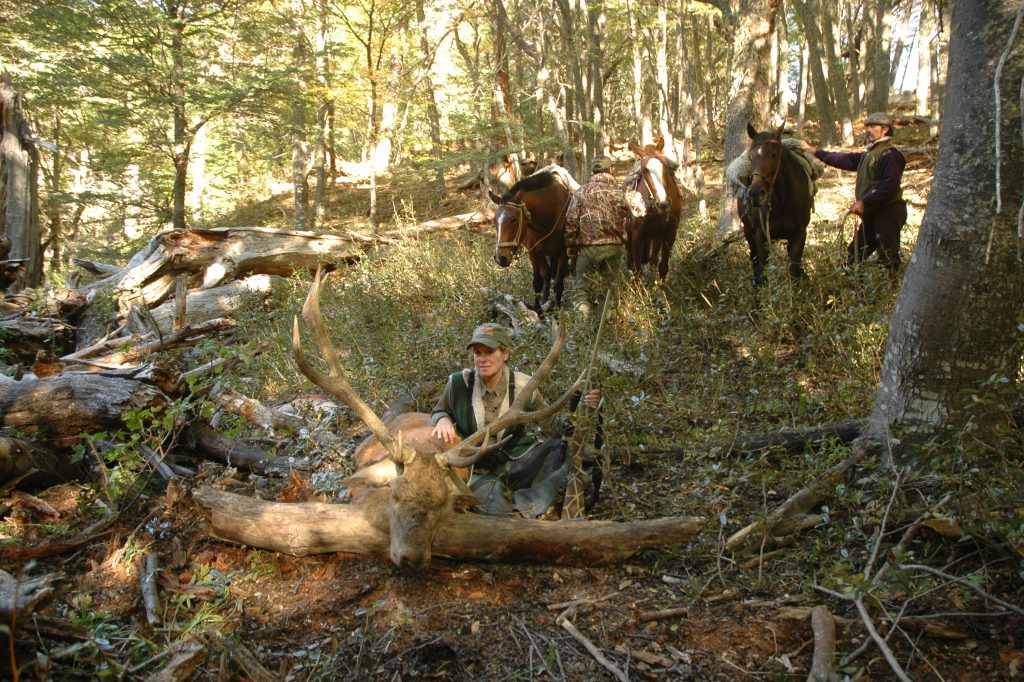
Argentina also has an active deer breeding industry, working hard to catch up with the Kiwis. So, as with New Zealand, there is a mix of free range and otherwise. Same-same, the biggest stags are behind wire. In both countries, hunts for “take ‘em as they come” stags, up to potentially excellent, are reasonable, usually less than a medium elk hunt in the Rockies. Want a really big stag? Doesn’t matter where, it will cost you.
TIMING IS EVERYTHING
A big red stag is an amazing creature, with multi-tined crowns, thick beams, and a forest of points on each side. This may surprise you, but I’ve never shot a really big stag. I avoid fences as much as possible, and genuine free range is unusual for the biggest stags. Also, different strokes for different folks. It’s just not an animal I’ve been compelled to invest that heavily in.
That said, I’ve done a lot of stag hunting: Austria, eastern Europe, western Asia, England, Scotland, Spain; multiple times in Argentina and New Zealand. I’ve been beaten, of course, but I’ve also gotten lucky. I’ve missed the rut, too early and too late. That isn’t necessarily the kiss of death; it depends on terrain and vegetation. If you can see ‘em, you can hunt ‘em, but if the rut isn’t on, you won’t hear ‘em…and you’ll miss the real magic of hunting red deer.
They call it the “roar.” The first time I heard it, with Ricardo Medem in Spain, I had no idea what I was hearing. Honest, I thought it was a domestic cow calling to her calf. Wapiti bulls challenge with their lilting three-note bugle. European red deer roar. A deep, guttural, frightening sound that couldn’t possibly come from the throat of a deer. But it does. This is odd because our wapiti and their red deer are genetically close and interbreed freely, but the vocal challenge of mating males is altogether different. It is said that the “bugle” carries better and farther in open country, remembering that our wapiti were creatures of the Great Plains. The same theory suggests that the red stag’s “roar” carries better in European forests. Both sounds are fantastic…and altogether different.
With elk, catching the bugling is a matter of seasonality; in some states, only the bowhunters get a crack at it, and they are richer for the experience. With red deer, because of limited pressure and, often, privatization of wildlife, if you plan properly, you can catch the roar.
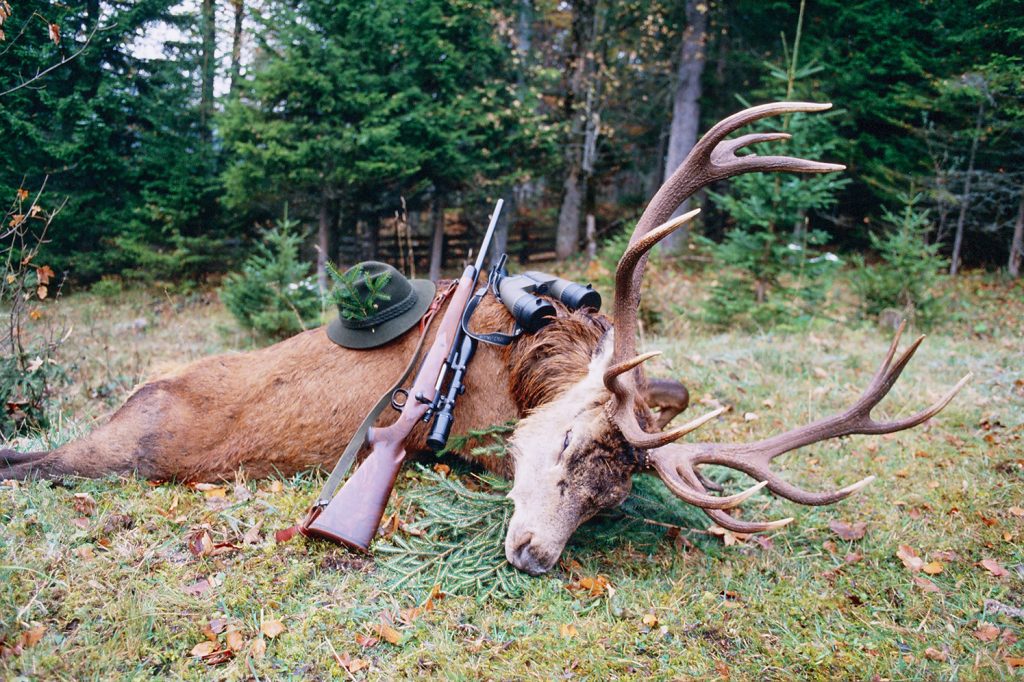
This could be a matter of restricted hunting pressure almost throughout the red deer’s range, but in my experience the red deer is more aggressive than the wapiti. Can’t tell you how many times (or places) I’ve been in the middle of them, stags roaring like lions. Maybe the best-ever wasn’t my stag. Donna’s turn, a horseback hunt up into the Andes above Bariloche, a deep-throated stag going crazy on an impossibly thick hillside. I stayed back with the horses while her guide carried on a conversation, drawing the stag in. Just feet, hidden gray body, and antlers through a screen of foliage at forty yards. How she found a hole to shoot through I have no idea. Antlers were thick and unusually long. Points could have been better, but it was the biggest-bodied red deer I’ve ever seen…and, to my eye, the best hundred-percent free-range stag in my experience.
Because he is so widespread, the red deer offers a weird advantage: There are two “roars.” Yeah, only one per customer (or stag), but one in the Northern Hemisphere; another in the Southern.
It varies with area, but in Eurasia the red deer roar in late September and early October (likewise North America’s introduced stags). In South America and the South Pacific, the roar and antler cycle are opposite. Again, it varies by specific area and depends on weather, but figure late March through April. Sure, with luck and hard hunting, you can miss the roar and get a great stag, but you’re also missing hearing them screaming. So, as a North American, if I wanted a red stag, I’d first decide whether I wanted to hunt in our autumn or spring. In autumn, Scotland, Spain, eastern Europe; in spring, Argentina or South Pacific.
